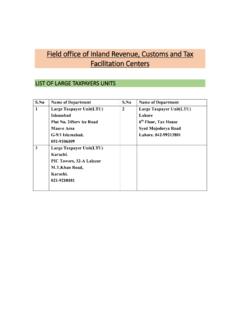Transcription of Military Aircraft Incident Response Guide - DERA
1 Emergency Response Guide M IL IT A R Y A IR C R A F T IN C ID E N T S. First Response Search and Rescue Responder Safety Reporting Instructions Media Relations Guide Military Response Teams The Disaster Preparedness and Emergency Response Association Box 797. Longmont, CO 80502. July 2007. DERA. Disaster Resource Center Box 797. Longmont, CO 80502 USA. EMail: _____. 15 July 2007. Dear Emergency Manager: The attached Emergency Response Guide for Military Aircraft Accidents has been prepared using the best available unclassified information from the Department of Defense, the Federal Emergency Management Agency, the USAF Rescue Coordination Center, the National Security Emergency Preparedness Directorate, and the Defense Nuclear Agency. We hope you will use this publication as a resource for local contingency planning. While we have attempted to ensure accuracy and reliability, we do not claim that this information will fit every circumstance, nor that it is appropriate to every event.
2 Local Response officials must draw on a variety of primary resources in developing plans. We strongly recommend that you contact the Fire Chief or Disaster Preparedness Office of a nearby Military installation and review your plans and assumptions with them prior to an emergency. In any emergency Response , nothing can take the place of training, experience and judgment on the part of the Incident Commander and individual Response team members. The Incident Commander should use the attached material as a Guide only, making final decisions based on actual conditions, unique circumstances and on-scene observations. We hope this Guide is helpful. Please send us information about improvements you'd like to see in future editions, or suggestions about other ways we might help your community improve its disaster preparedness programs. If you reproduce this Guide , we ask that you do so in its entirety.
3 This publication is respectfully dedicated to the memory of Chief Roger Edwards. He dedicated his life to service that others might live. His leadership and courage will never be forgotten by those fortunate enough to serve with him. This publication was first developed through his foresight and guidance and he established high standards of accuracy and accountability that we will continue to maintain. In his life and by the courage with which he met death, Chief Edwards taught us all the true meaning of valor, service to others and duty before self. We would like very much to have you and your organization join with us as members of our international, nonprofit professional association. Our aim is to work together for the common good in all areas of disaster preparedness, mitigation, Response , and recovery. Please let us hear from you. We need your support. Best Wishes, Bascombe J.
4 Wilson, Col. USAF (Ret.). Director, DERA Project Task Force Preparedness, Mitigation, and Training _____. Copyright 1992, 1996, 1999, 2007 DERA. All rights reserved. No part of this publication may be reproduced without prior written permission. Permission is hereby granted for fire departments and local emergency Response officials or other governmental/nonprofit entities to reproduce this Guide , provided it is done so in its entirety. FIRST Response . Immediately SURVEY the scene for obvious hazards (Munitions, Fuel, Instability, etc.). RESCUE survivors. If possible, enter wreckage from UPWIND SIDE. MOVE survivors to safe place OBTAIN emergency medical care as needed SEARCH the wreckage for concealed survivors PROTECT the environment from further damage (fuel or foam runoff, etc). CONTROL additional property damage NOTIFY the nearest Military installation Fire Chief or Command Post PRESERVE the site as intact as possible for investigators DO NOT MOVE anything not necessary for rescue or damage control As Soon As Time Permits GUARD the wreckage SEARCH for additional victims, parts or wreckage along the flight path IDENTIFY witnesses for later interview REPORT the accident to an FAA Airport Control Tower or service center DIAGRAM the scene or take official departmental photographs REFER news media / photographers' requests to a Military information officer Rescue Safety Guide Like any disaster, an Aircraft accident may require actions that do not fall into a predictable pattern.
5 When in doubt, take the course of action your own experience, training and judgement dictate in order to minimize the risk to victims and rescue personnel. If survivors are in the wrecked Aircraft and rescue appears feasible, remember: STAY CLEAR FROM FRONT AND REAR OF EXTERNALLY CARRIED TANKS OR PODS. These may contain missiles or rockets whose explosive wake is hazardous. Never disturb bullets, bombs or other armament thrown clear from the Aircraft as they may explode. Heat, fire or shock may make munitions very unstable. If possible, put warning marker flags at munitions items when they are located. SAFEST APPROACH TO THE CRASH IS GENERALLY FROM UPWIND, TO THE SIDE OF. THE Aircraft FUSELAGE. Munitions or fuel may be scattered along the crash path. Weapons may fire forward, or create a blast to the back. Concealed survivors may be tangled in debris behind the main wreckage.
6 ACCESS HATCHES, RESCUE POINTS, Aircraft EXITS. Location of escape hatches, doors, and exits from all and most NATO Military Aircraft are indicated by Orange-Yellow markings on the outside of the Aircraft . On jet Aircraft a Red Rescue Arrow will indicate the rescue points. Instructions are stenciled at this arrow for the jettisoning of canopies or hatches. USE CARE IN JETTISONING CANOPIES OR HATCHES. They are often blown away from the Aircraft by explosive devices. When operating the jettison controls, always position yourself well to the side and clear of the canopy/hatch. A Red Rescue Arrow points to the canopy/hatch jettison controls. Follow all stenciled instructions at the arrow and in the Warning Triangle near it. If unreadable, the following steps generally apply. Near the warning triangle, you will find a small door with controls inside. Push a release button to open the small door Inside is a T Handle, connected to a 10-foot cable.
7 Stand clear of hatch or canopy. Pull the T Handle out all the way. Canopy or hatch will be blown off with explosive force. EJECTION SEAT WARNING. LOOK FOR WARNING MARKINGS ON THE Aircraft , AND BEWARE. HAZARDS OF EJECTION SEATS. Aircraft with ejection seats have Warning Triangles painted near crew rescue points. Use extreme care not to actuate the seat, before, during or after rescue. Do not raise, move, or tamper with the armrests of crew seats, or any controls painted YELLOW and BLACK . These controls fire the ejection seats. Do not move any controls, handles or levers in the cockpit unless you are thoroughly familiar with that particular Aircraft . Ejection systems vary among models and types. Before removing survivors, always unfasten seatbelt, shoulder and/or parachute harness and oxygen mask as well as radio cords and oxygen tubes. Cut any wire, tube or harness if needed.
8 Cutting will not actuate an ejection. Time permitting, knot the Oxygen line to reduce fire hazard. DO NOT MOVE VICTIMS EXCEPT AS NEEDED TO PROTECT THEM FROM FIRE OR OTHER. INJURY UNTIL EMERGENCY MEDICAL PERSONNEL ARRIVE. If there is no Military medical assistance nearby, request a civilian doctor and Emergency Medical Technicians/Paramedics be summoned to the scene. Have EMTs or other trained personnel prepare injured personnel for transport to a trauma center or nearest hospital. Notify the hospital of the number of inbound patients and apparent nature of injuries. AVOID DISTURBING THE WRECKAGE. Except as necessary for rescue, do not disturb the wreckage. An intact site is necessary for the crash investigation team. KEEP BYSTANDERS AND UNAUTHORIZED PERSONNEL AWAY. NO SMOKING. Fire Fighting Guide Fire and explosion are always possible at a crash scene. Fuel sources include residual Aircraft fuel, cargo, structural materials and munitions, as well as materials on the ground.
9 Ignition sources include hot metal, electrical systems, weapon fuses, flares and other pyrotechnic devices. Oxygen sources include high pressure cylinders, liquid oxygen tanks and ambient air. Other potential hazards include exploding oxygen bottles, nitrogen or CO2 tanks, liquid oxygen containers, exotic fuels, ejection seats, canopy and hatch jettison systems, high pressure tires and struts, magnesium components, munitions, and hazardous cargo. PROHIBIT SMOKING. Volatile materials may have been scattered over a very wide area. EVACUATION. The crash may also be a HAZMAT Incident . Evacuate not only for fire protection, but also for HAZMAT protection if indicated. As always, keep the public calm: Panic can be much more hazardous than any object carried aboard a Military Aircraft . FIRE ATTACK. Use foam, high-pressure water fog, carbon dioxide, or dry chemical powder to attack aviation gasoline and jet fuel fires.
10 Halon agents, although being withdrawn from service, are most effective in these situations. BOMBS, MISSILES OR ROCKETS. If such a weapon is found in the wreckage, cool its entire surface with available fire extinguishing agents or water spray. Do not handle or move. AMMUNITION. Do not handle or move. Mark location for Military disposal experts. If ammunition is scattered, cordon the entire area and keep spectators and souvenir seekers away. NUCLEAR WEAPONS. It is very unlikely that any nuclear device will be in the wreckage. By quickly reporting the crash to the nearest Military base or the Air Force Rescue Coordination Center, you will get Military assistance and procedural information about any weapons on board. If Nuclear Weapons are present, they present the same immediate hazard as any other high explosive. Fire will not cause a nuclear detonation. Some hazardous materials, including radioactive substances, may leak from the weapons if they are broken open, or be carried off as particles in smoke if the weapons burn, rupture, or explode.






![1[1]THE SOCIETIES REGISTRATION ACT, 1860 (Act XXI of …](/cache/preview/c/4/e/2/e/c/f/c/thumb-c4e2ecfc8312d84140c7c28b0227d684.jpg)

